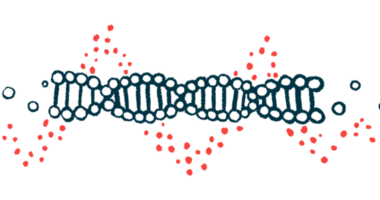Early diagnosis is benefit to children with hemophilia A: Study
Not having a family history of disease can delay diagnosis, start of therapy

A lack of family history of disease can delay a diagnosis and timely initiation of preventive therapy in children with hemophilia A, increasing the need for intensive factor replacement therapy when a first bleeding event happens, a study shows.
“These observations highlight the importance of an early diagnosis in hemophilia,” the researchers wrote. “Nowadays, genetic testing with next-generation sequencing (NGS) have expanded the identification of gene defects in numerous families, thereby improving identification of carriers and prenatal diagnosis.” The study, “Impact of Family History of Haemophilia on Diagnosis, Management and Outcomes in Severe Haemophilia,” was published in Haemophilia.
Hemophilia A is a bleeding disorder caused by mutations in the F8 gene that lead to a deficiency in clotting factor VIII (FVIII), a protein essential for normal blood clotting. This can result in spontaneous or prolonged bleeding episodes, particularly in the joints and muscles.
When a family history is known, diagnosis often occurs at birth, allowing for an early start of preventive treatment before major bleeding occurs. Preventive treatment typically involves regularly administering factor replacement therapy to supply the body with a working FVIII.
In up to 60% of severe cases, no family history is known, however, and patients are diagnosed only after a significant bleeding episode in infancy or early childhood.
Delays in diagnosis also lead to delays in prevention and to a greater reliance on intensive FVIII administration over consecutive days. This high-exposure treatment may increase the risk of developing neutralizing antibodies, called inhibitors, that target the delivered FVIII, rendering replacement therapy less effective.
Family history’s effect on diagnosis, treatment, outcomes
Researchers in Spain sought to examine how family history influences diagnosis, treatment, and clinical outcomes in 1,208 children with severe hemophilia A who were born between 2000 and 2022. The children were enrolled through the PedNet registry across 29 hemophilia treatment centers in Europe, Israel, and Canada. All were either untreated or had minimal exposure to treatment. Data were collected on all FVIII administrations for at least the first 50 exposure days, or until the development of an inhibitor, whichever occurred first.
Among them, 45.9% had a known family history of hemophilia A, while 54.1% didn’t.
The children with a known family history were diagnosed much earlier — at birth or within the first month of life — than those without a family history, who were diagnosed at a median age of 8.3 months. Similarly, the first exposure to FVIII treatment occurred earlier in the family history group (median, 8 vs. 10.3 months).
Bleeding was the most common reason for first FVIII treatment in both groups, but was more frequent in those without a family disease history (80% vs. 67%). Preventive treatment was more often the first intervention in the children with a family history (21% vs. 13%).
Starting treatment early
Intensive FVIII administration, defined as treatment for three or more consecutive days at first exposure, was significantly more common in the children without a family history. Specifically, 28% of patients in this group received peak treatments of at least three days, compared with 19% of those with a family history. Similarly, 16% of children without a family history received peak treatments lasting five or more days, compared with 12% with a family history.
“Therefore, it remains essential to remark the relevance of starting prophylaxis early to minimize peak treatment as first [exposure to treatment] in children with hemophilia, subsequently mitigating the increased risk of inhibitor development,” the researchers wrote.
Among the 823 patients who didn’t develop inhibitors, those with a family history had their first bleed earlier (median, 9.2 vs. 10.6 months), as well as their first joint bleed (median, 14 months vs. 14.9 months).
“The earlier recognition of bleeding in those whose families were aware of the bleeding tendency may justify this difference, rather than an increased hemorrhagic risk in patients with a positive family history,” the researchers wrote.
The overall proportion of patients with bleeds or joint bleeds within the first 50 exposure days was similar in both groups, however. Inhibitors also occurred at similar rates in both groups, with about a third in each group having them.
“These findings support the benefits of early diagnosis in severe hemophilia and emphasize the need to further investigate family history of hemophilia to enable an adequate management of hemophilia carriers,” the researchers wrote. “Due to the unexpected results regarding inhibitor development, further research is needed to explore additional factors that may influence inhibitor occurrence.”







